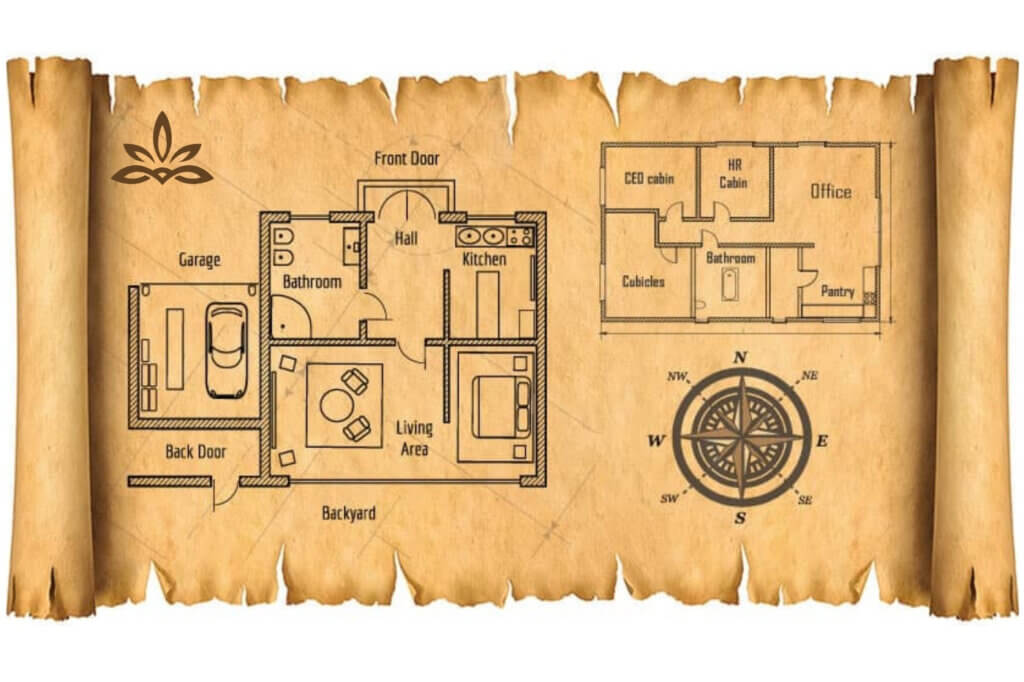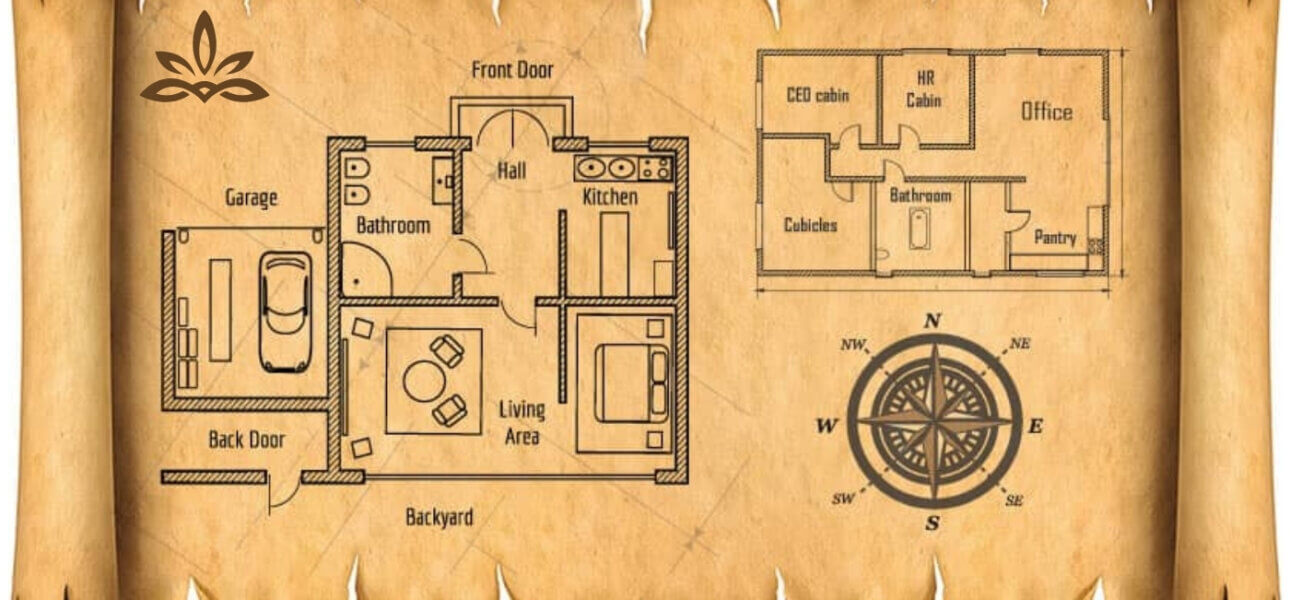Buying a plot is exciting, but building right begins with one quiet hero of good design: setbacks. The open space you keep around your house shapes light, airflow, privacy, safety, and even resale value. In Padappai and the Oragadam belt, where communities are growing fast, smart setbacks make daily living cooler, quieter, and more future ready.

What are setbacks and why they matter
Setbacks are the minimum open spaces you leave on all sides of your building from the plot boundary. They protect your home and your neighbour’s home by:
- Allowing sunlight and cross ventilation
- Reducing heat and moisture issues on walls
- Creating safer access for maintenance and emergencies
- Improving privacy and noise control
- Future proofing for rainwater harvesting, EV wiring, and solar
Legal vs lifestyle: get both right
There are two ways to think about setbacks.
- Legal compliance: Following DTCP or CMDA rules for minimum open spaces based on road width, plot size, and building height. This is essential for plan approval and completion certificate.
- Lifestyle comfort: Going a little beyond the bare minimum to make your daily life more comfortable. A few extra inches on one side can mean better airflow, easier parking, or a shaded sit-out.
Typical patterns you will hear from your architect
Every plot is unique, but common guidance often includes:
- Front setback sized for car movement and gate swing
- One “service side” setback for utilities like outdoor unit, pipelines, rainwater pipes
- One “breathing side” for windows to capture cross breeze
- Rear space planned for wash area, staircase light well, or a small kitchen garden
Note: Always follow the latest local by-laws for Padappai and surrounding areas. Your architect will map the correct values to your site before submitting for approval.
How road width influences front setback
The wider the abutting road, the more valuable your frontage. Adequate front open space helps:
- Safe car entry and exit
- Visitor parking without blocking the street
- Better façade design and shading depth
- Space for a small veranda or steps that never cross into public land
For villa plots near Oragadam’s industrial corridors, a thoughtful front setback also reduces dust infiltration and keeps your entry calmer.
Side and rear setbacks for cooler interiors
In Chennai’s climate, walls that bake in the sun need breathing room. Sensible side and rear spaces help:
- Cross ventilation between rooms
- Placement of windows without facing a neighbour’s wall at arm’s length
- Reduced dampness and algae on exterior walls
- Cleaner routing for plumbing and electrical lines
Tip: Keep at least one side setback wide enough for a person to walk with a ladder for maintenance.
Vastu considerations that align with comfort
Many buyers prefer layouts tuned to Vastu. Well planned setbacks can support that without compromising approval:
- Wider North or East side setbacks improve daylight and early morning breeze
- Balanced setbacks reduce heat load on West walls
- Rear space helps for kitchen utility and water lines in preferred zones
- Open-to-sky cutouts serve as light wells near staircases or pooja areas
Parking, turning radius, and gate placement
If you plan a car porch, front setback and gate placement must work together:
- Ensure smooth turning into the porch without repeated back and forth
- Keep a clear pedestrian path to the main door
- Provide rain shading so passengers can alight dry during monsoon
- Leave space for future EV charger and a safe cable route to the distribution board
Space for services: today and tomorrow
Setbacks are also your service corridors. Plan them early for:
- Rainwater downpipes and recharge pits
- Water tank, pump, and filtration units
- Outdoor AC units with service access and airflow clearance
- Solar inverter wall space and conduit paths
- EV charging point with protected cabling
- Drain cleanouts and inspection chambers
- Clothes drying lines that do not block windows
Corner plots and visibility
Corner plots need careful front and side treatment:
- Maintain sight lines at the junction for safety
- Avoid tall compound elements that block turning traffic
- Use the extra face for elegant façade articulation and landscaping
- Plan gates to reduce conflicts with cross traffic
Compound wall and neighbour relations
Good boundaries make good neighbours:
- Keep compound foundations fully within your land
- Avoid encroaching plinth steps or sunshades into setback or public space
- Provide weep holes and slope so stormwater stays inside and goes to your recharge system, not to the street or neighbour
Common mistakes to avoid
- Designing to the absolute minimum everywhere and losing cross breeze
- Placing windows that open to a blind wall right across the boundary
- Forgetting service access for AC units, sump, or inspection chambers
- Shrinking front setback so much that car parking becomes a daily struggle
- Not aligning setbacks with Vastu and climate comfort from the start
Quick buyer checklist for Padappai plots
- Ask your architect to mark legal setbacks on the site plan relative to the road and neighbours
- Reserve one side for a full height service corridor with walkway width
- Align wider open space towards North or East for light and breeze
- Pre plan EV, solar, and rainwater recharge points inside setbacks
- Keep front clear for parking, visitor entry, and a welcoming façade
How Velammal Garden helps you get it right
Velammal Garden is a DTCP and RERA approved gated community in the Padappai Oragadam belt, with clean documentation and clear plot boundaries that make setback planning simpler. With defined roads, drainage, and utility corridors, your architect can quickly produce a compliant plan that is also climate smart and Vastu aligned. Explore the layout and speak with our team at velammalgarden.com to understand how your preferred plot size can support balanced setbacks and a cool, bright home. For site visits and expert guidance, connect with us at velammalgarden.com.
FAQs
What are setbacks in a residential plot layout
Setbacks are the mandatory open spaces you must leave between your building and the plot boundaries on all sides. They ensure light, ventilation, fire safety, privacy, and legal compliance, and they improve long term comfort and resale value.
How do I know the legal setback for my plot in Padappai
Legal setbacks depend on local by-laws, road width, plot size, and proposed building height. Your architect will use the current DTCP or CMDA norms during plan approval. Always get a stamped drawing showing exact front, side, and rear open spaces.
Can I adjust setbacks for Vastu without risking approval
Yes, within the approval framework. Many Vastu preferences align with climate comfort, such as keeping more openness to the North or East. Work with your architect to balance Vastu priorities and the minimum legal requirements.
Do setbacks affect car parking and EV planning
Absolutely. Front setback and gate placement decide turning radius, porch usability, and where you can safely place an EV charger. Plan cable routes and a protected mounting point on a side wall well inside your property.
What if my neighbour builds close to the boundary
As long as your plan follows approved setbacks, you are compliant. Use your side and rear spaces for windows, light wells, and services. If a neighbour’s work seems to violate norms, inform your architect and the local authority before you start your building work.
Ready to choose a plot where legal and lifestyle needs meet perfectly Setbacks done right feel like a daily luxury. Visit velammalgarden.com to explore plots that make smart home design simple and future ready.


